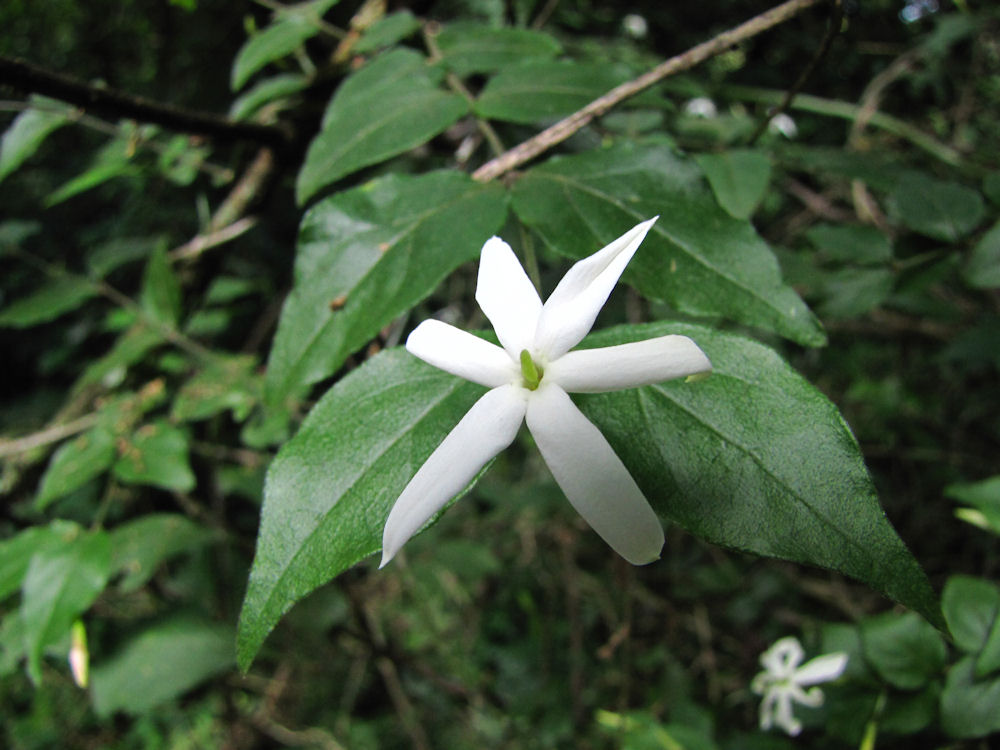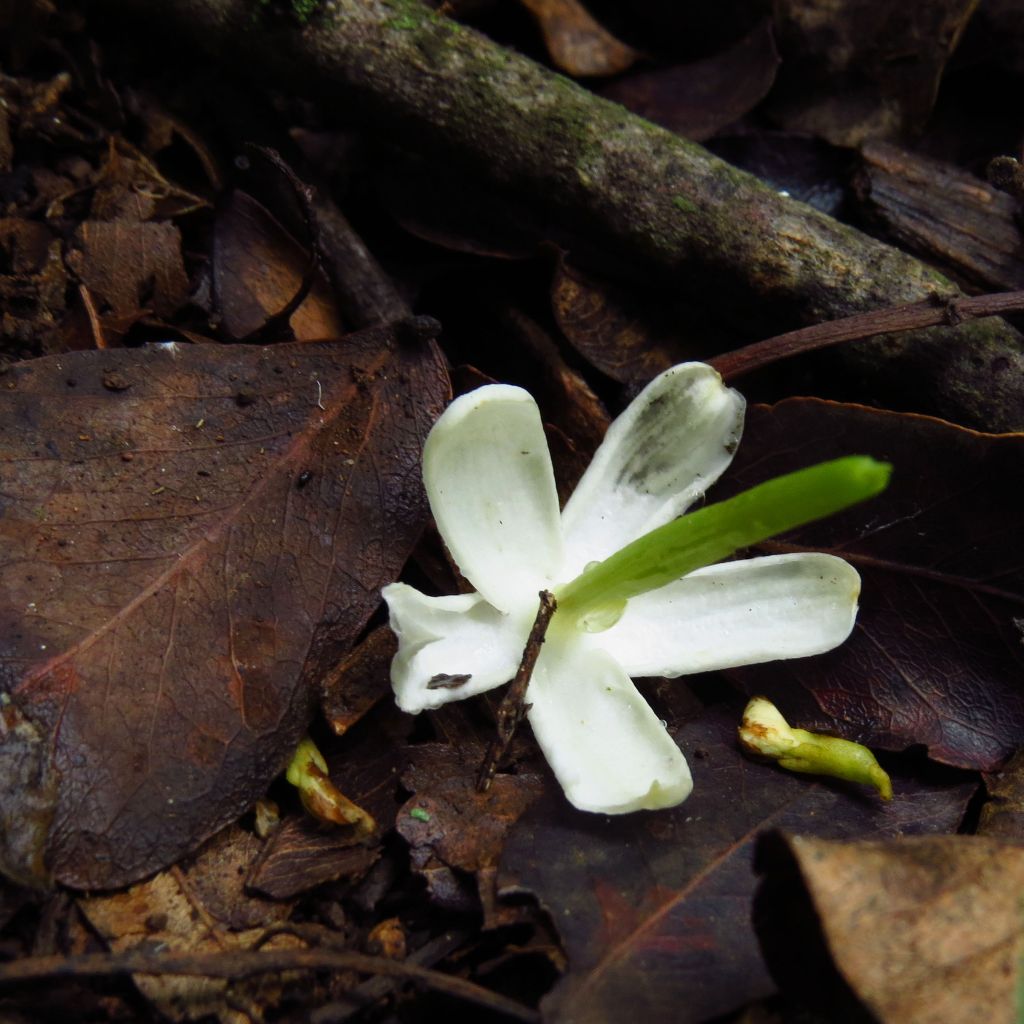Jasminum multipartitum
If you want to attract birds to your garden, planting creepers and scrambling shrubs is always a good idea. The sweetly scented flowers of Jasminum multipartitum are host to many insects including the larvae of Cambridge Vagrant Butterfly, the Variable Prince Moth, Oleander Hawk Moth, Death’s Head Hawk Moth, and King Monkey Moth (ideal bird food).

The shiny, juicy, black berries are a favoured bird snack and game browses the leaves.
The gorgeous big white, star shaped flowers bloom en masse at this time of the year on the edges of woodland and scrub patches all along the drier parts of the east coast of South Africa. The dark green glossy foliage is attractive throughout the year and a perfect foil for the profusion of early summer blossoms. It is particularly useful planted on an East facing wall to keep it cool, with the scent wafting in through the windows. The fragrance is more intense in the evenings, presumably to attract the Hawk Moths that pollinate this plant.
Ten Jasmine species are indigenous to South Africa, including Jasminum angulare, J. breviflorum and J. stenolobum in KZN. Roots are used traditionally as a love charm emetics and the flowers to make herbal tea and pot-pourri.

Common name: starry wild jasmine; Afrikaans: sterretjies jasmyn; Zulu: Imfohlafohlane